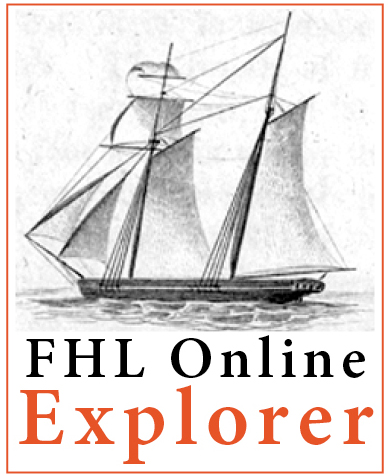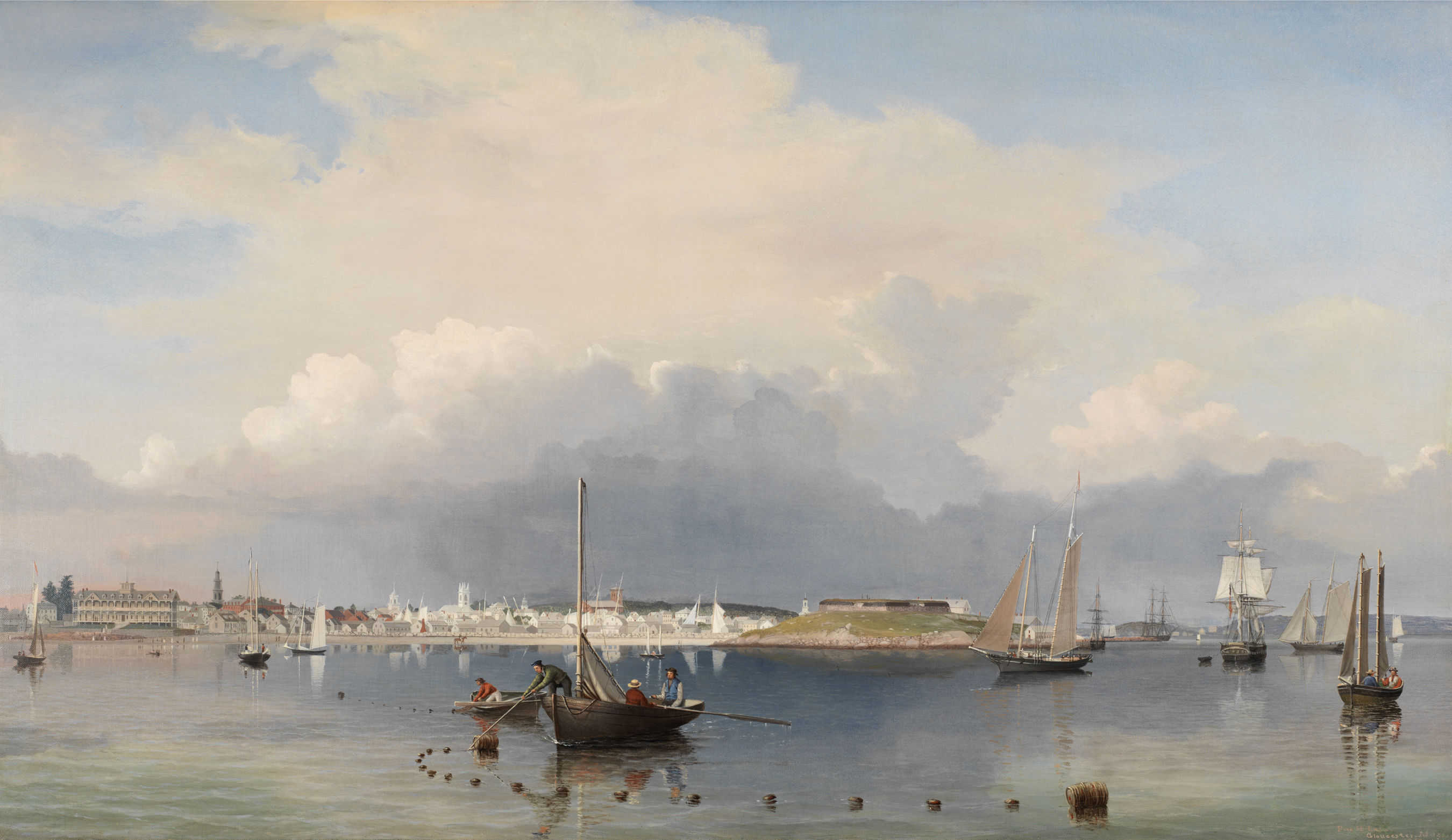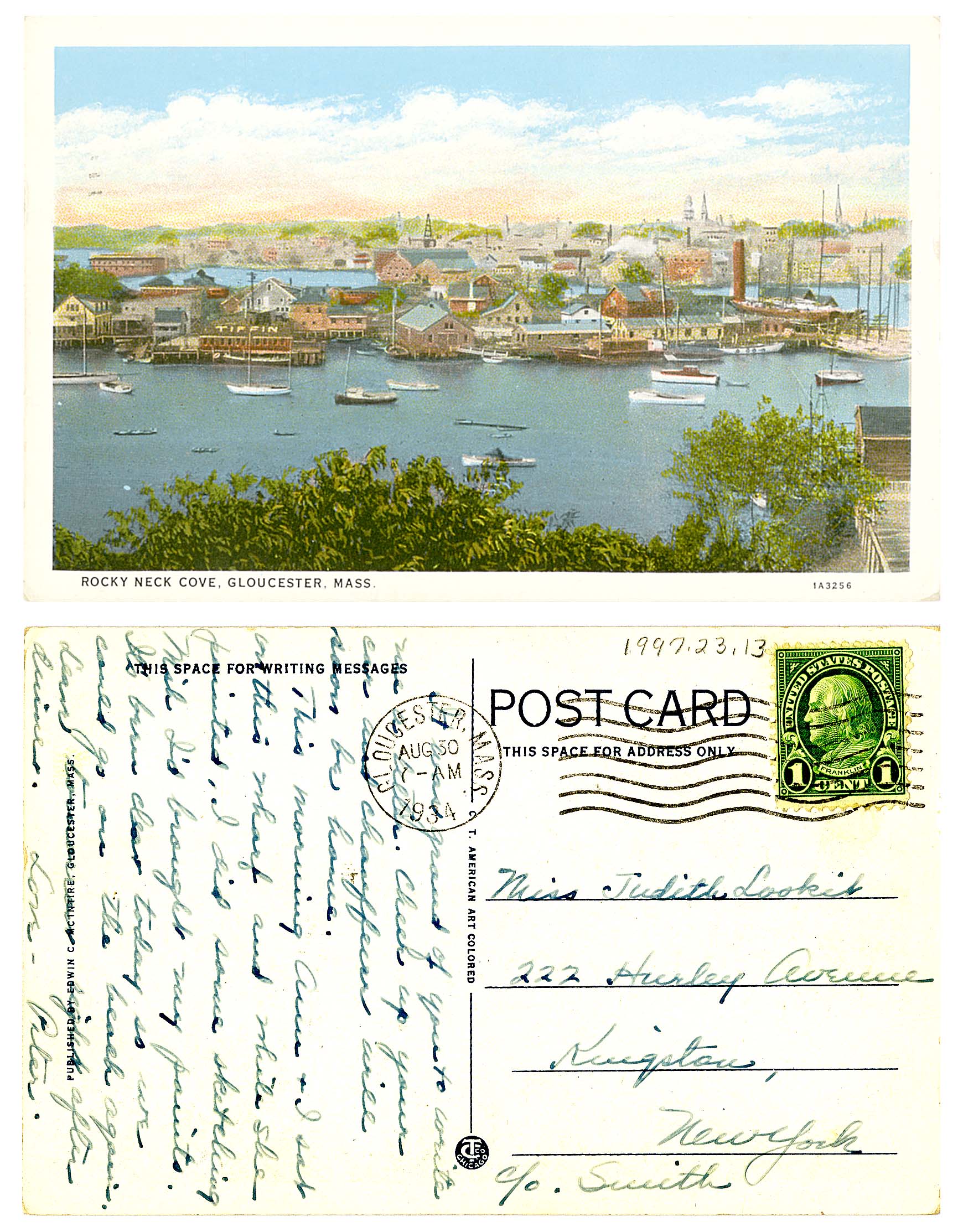An online project under the direction of the CAPE ANN MUSEUM
Lesson plans for teachers
Fitz Henry Lane Online Educational Resources
Exploring the Past through an Artist's Eyes
Lesson Plan 1A: Grades K-5
 |
Fitz Henry Lane Online Lessons are designed to encourage students to make observations while looking closely at artwork and archival documents, to carry out their own investigations into the nineteenth-century world of an artist and his surroundings, and to foster critical thinking at multiple levels. Lessons were designed with a 30-45 minute timeframe in mind for observation and group discussion. Assessments were designed for completion with the teacher during additional class time or independently at home. |
Purpose
What can a painting tell students about life in nineteenth-century Gloucester? Making observations about a painting or drawing encourages students to slow down and really look with their eyes. From collaborative close observation students can then use skills of making inferences to think critically and draw conclusions about life during this time period. Students will share their findings by creating a postcard.

Objectives
- Students will describe what they observe while looking at a painting by Fitz Henry Lane.
- Students will discuss and record observations on a chart.
- Students will make inferences and draw conclusions about life in the nineteenth century.
- Students will apply and demonstrate their understanding by creating an illustrated postcard reflecting various aspects of nineteenth-century life.
- Students will create a drawing based on life in the nineteenth century.
Materials
- Wall chart of worksheet 1
- Copies of worksheet 1 for each student (download here)
- Copies of worksheet 2 (blank postcard) for each student (download here)
- Crayons/colored pencils
Procedure
Please note: it is recommended that the teacher preview the site including the paintings, interactive features and historical materials for the lesson in advance.
Explain to the class that in today’s lesson they will be examining a painting by Fitz Henry Lane. The purpose of the lesson is for them to learn as much as they can about life in nineteenth-century Gloucester. Explain that when they are done examining the painting closely, they will be expected to write a postcard to a family member or friend describing what they saw and learned on their visit to Gloucester.
Access Fitz Henry Lane Online from your classroom computer. Find the painting Gloucester Harbor, 1852 (inv. 38) to display on the smart board or ask students to do the same using their own personal devices.
Use your cursor to zoom in and around the painting. If possible, have a student take your place to navigate based on their classmates’ directions. For 5-10 minutes, discuss the class observations out loud and record their thinking on the wall chart to model use of the chart.
- What do you see in this painting?
- What do you think is happening? Why?
- What do you wonder about?
The Visual Thinking Strategies line of questioning may also be used. What is going on in this painting? What do you see that makes you say that? What more can we learn?
As a class, fill out Worksheet 1. Work cooperatively to record class observations on the board and on each student’s sheet. Encourage students to copy from the board. Observations should include objects from the land and harbor.
The teacher should record the group's thoughts on the wall chart. Allow time for whole class discussion and recording. Explain to the students that the class can research together to learn more about what is being wondered about. If time allows, access the interactive feature on the lower right of the screen, as well as the related Historical Materials section, to find the answers to these questions.
Record the answers that are found on the wall chart. It’s likely that some of the students’ questions will not be answered on the site. Ask students to think about where else someone could look for information.
Assessment
Using the completed chart as a reference, students will design a postcard bringing to life a curious tourist’s visit to Gloucester Harbor in 1852.
They may use the following to help them get started: "Greetings from Gloucester! Today I saw and learned so many interesting things! First I…" Their drawing on the front of the card should relate to the message they are writing on the back of the card.
Before they start the project ask the students to think about what a “good” postcard should look like. Create a list of the criteria that students must meet. Students should address a particular person; tell that person where they are; and share one thing they learned about Gloucester in the nineteenth century based on their observation chart.

Postcard of Rocky Neck, postmarked Gloucester, August 30, 1934, addressed to
Miss Judith Lookit, 222 Hurley Avenue, Kingston, New York. Cape Ann Museum.
The text reads: "It was grand of you to write me a letter. Cheer up your car and chauffeur will soon be home.This morning Ann & I sat on this wharf and while she painted, I did some sketching. Wish I’d brought my paints. It’s been clear today so we could go on the beach again.(illegible). Love, Peter".
Extension
Students may write a journal entry about a day in their life living in nineteenth-century Gloucester. They should choose a point of view from which to write. These can include a child, a fisherman, a businessman or woman, a minister or a farmer…they should include authentic details that reflect the time period.
Standards
National Core Arts Standards
VA: Cn11.1.4a: Through observation, infer information about time, place, and culture in which a work of art was created.
Common Core State Standards
CCSS.ELA-LITERACY.W.4.3
Write narratives to develop real or imagined experiences or events using effective technique, descriptive details, and clear event sequences.
National Curriculum Standards for Social Studies
NCSS Theme II. Time, Continuity and Change
Students will ask and find answers to questions related to the past in school, community, state and regional contexts; Students will use a variety of sources to learn about the past.
Massachusetts Curriculum Frameworks
History and Geography Skills and Concepts
Third grade
1. Explain the meaning of time periods or dates in historical narratives (decade, century, 1600s, 1776) and use them correctly in speaking and writing. (H)
2. Observe visual sources such as historic paintings, photographs, or illustrations that accompany historical narratives, and describe details such as clothing, setting or action. (H)
3.12 Explain how objects or artifacts of everyday life in the past tell us how ordinary people lived and how everyday life has changed. Draw on services of the local historical society and local museums as needed. (H, G, E)
This lesson includes practicing review of social studies standards learned in previous grades.